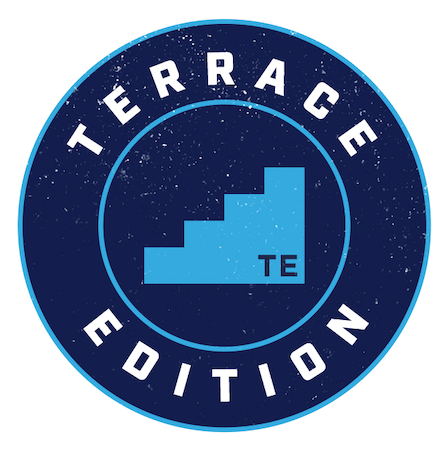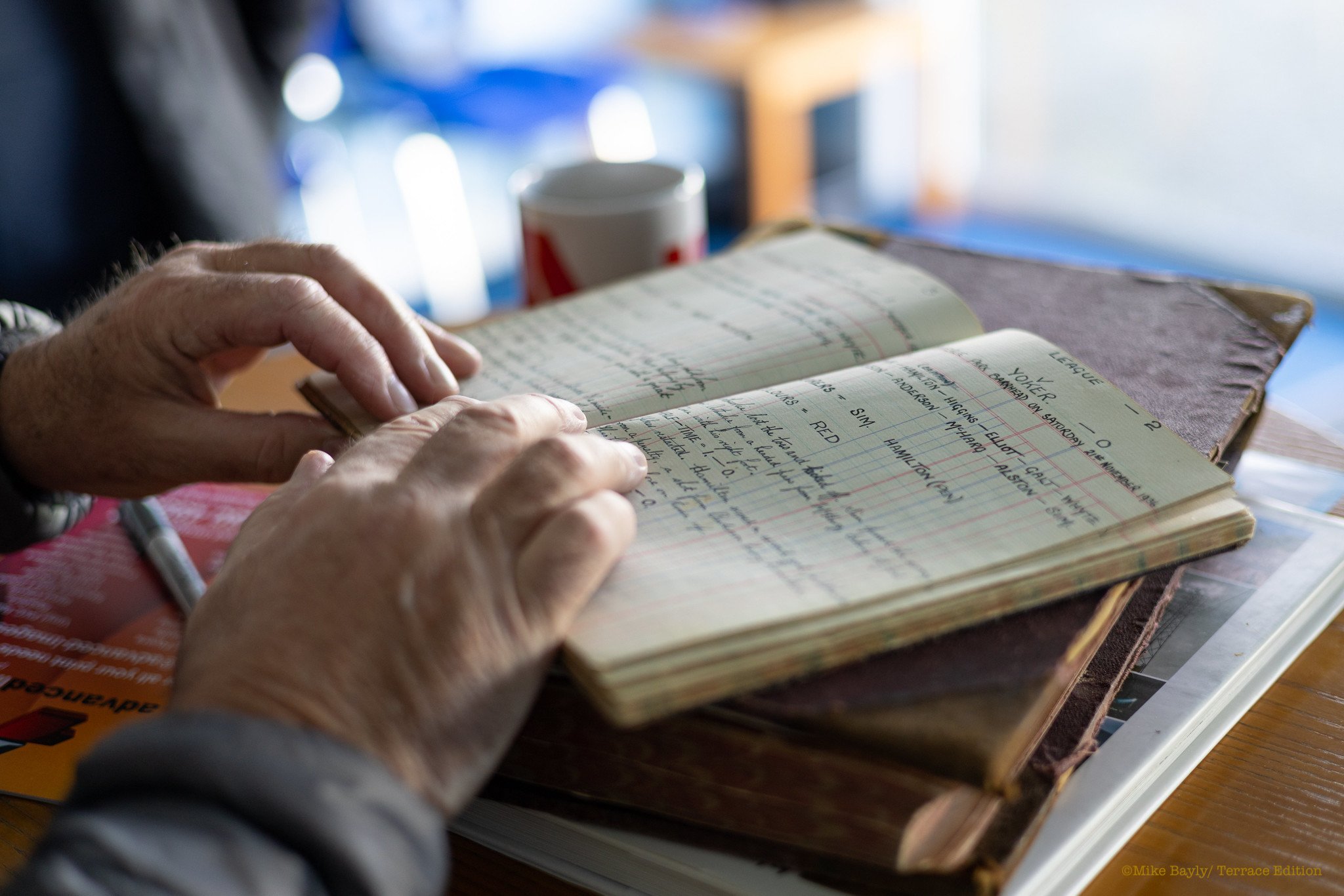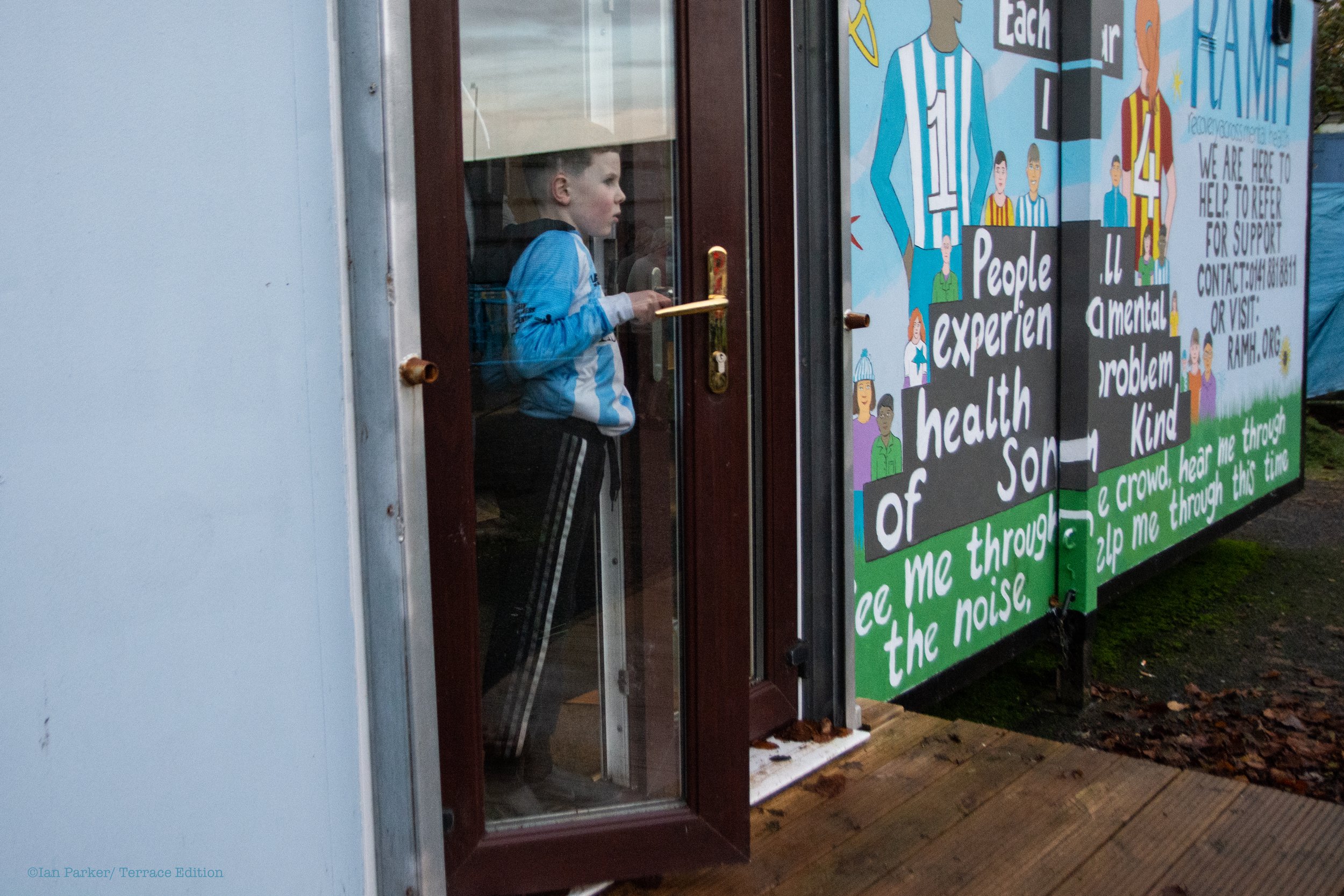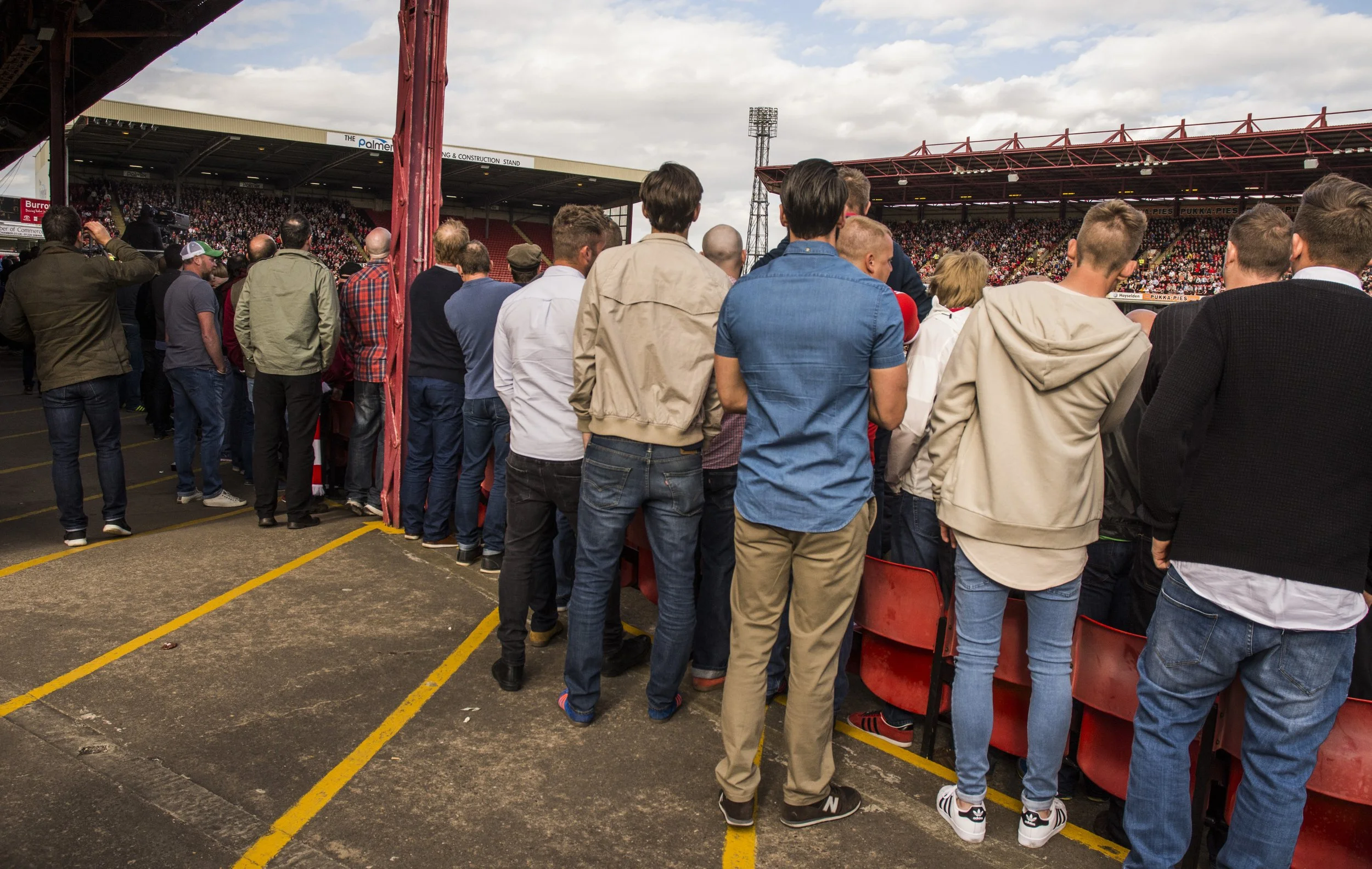Bovril for the soul at Arthurlie

Images: Ian Parker, Mike Bayly.
Cover image: Ian Parker.
Words: Mike Bayly.
The Arthurlie Cross can be found at the junction of Springhill Road and Carnock Crescent in Barrhead. It’s a safe assumption very few housing estates in Britain boast a mediaeval monument.
Arthurlie, an area of Barrhead, seven miles southwest of Glasgow, was purportedly named after the legendary King Arthur. Other than the ancient carved stone, there isn’t much in this prefabricated residential landscape that feels particularly Arthurian.
Yet, as Ronald Fleming says in The Art of Placemaking, “Every place has a story to tell”.
The ‘Lie, formed in 1874, have had a varied history and joined the newly formed SFL Division Three in 1923-24 (the division lasted three ill-fated years before being scrapped) and were immediately promoted as Champions to Division Two. Their home, Dunterlie Park, regularly saw 5-6000 crowds, boosted by strong away followings.
©Ian Parker/ Terrace Edition.
The days of such huge support may be long gone, but over the last 80 years, Arthurlie have been one of the area’s most decorated Junior clubs.
Arthurlie remain in regional football to this day, competing in the recently formed West of Scotland Football League (WoSFL).
They won promotion to the WoSFL Premier Division last season following an astonishing 2021/22 Division One campaign that saw the ‘Lie win 28 and draw two of their 30 fixtures.
This season has proved more competitive, with four defeats in the first nine games, although only a couple of victories separate second place from the relegation zone.
©Mike Bayly/ Terrace Edition.
Sitting at levels six-10 of the Scottish pyramid, the WoSFL is part of a major restructuring that provides a pathway for clubs to gain promotion to the Scottish Professional Football League (SPLFL) via the Lowland League (level five).
Prior to this, Arthurlie were members of the Scottish Junior FA West Region, a separately administered competition outside of the SPFL system. The effective absorption of the West Region into the WoSFL marked the end of an important era for football in this part of the country.
Junior football (‘Junior’ denoting the level of football played, not the age of the players) has important cultural cachet in Scotland. Fixtures commanded crowds often exceeding those in the SPFL, played out at historic, characterful venues largely untroubled by the ground grading gods.
While re-organisation is an opportunity to progress through the pyramid, clubs like Arthurlie are mindful of the challenges it would present. “Money is the biggest issue running a part-time club”, says Social Media manager Tim Fenton. “Progress to the SPFL requires lights, disabled facilities, and improved spectator accommodation. Our crowds average around 3-400, with the Old Firm a few miles away in Glasgow attracting a lot of local support.”
©Ian Parker/ Terrace Edition.
“We don’t rely on wealthy benefactors and need to manage our budget accordingly. Promotion to the Lowland League would mean a significant increase in travel time and costs. Players at our level have day jobs and may struggle with availability. These are all factors we need to consider.”
Today’s opponents Beith Juniors, based around 12 miles west of Barrhead, have a healthy away following. Home and away fans mingle on the large terraces that embrace the pitch. In the absence of seats, some supporters have brought their own.
Among the Dunterlie crowd are well-known faces from the past, including Jimmy McQuade, manager of Arthurlie’s 1998 Scottish Junior Cup winning side at Motherwell’s Fir Park, and David McLellan, who was a mascot that memorable day.
In a wider sense, history is an ever-present here. Dunterlie Park, largely unaltered in layout since opening over a century ago, is the closest living reminder of the old Scottish Third Division that folded in 1926.
©Ian Parker/ Terrace Edition.
The club have kept ledgers and notebooks dating from this era, containing fastidious hand-written records of results, attendances, and gate receipts. Dunterlie Park is as much a time capsule as it is a football ground, seemingly sheltered from change by a benign force field. The distinctive tenement buildings on Carlibar Road offer evocative period detail and there are views from the terraces towards the Victorian Bourock Parish Church, but the industrial age Barrhead once surrounding Dunterlie has largely gone.
An eventful first-half finishes goalless. The break provides an opportunity to wander around the ground. Freedom to roam is one of the great joys of non-League football. In the south-west corner is a Portacabin, brightened by a mural promoting Recovery Across Mental Health (RAMH), a charity based in Paisley. The tagline reads “See me through the crowd, hear me through the noise, help me through this time”.
Community is an important aspect of semi-professional football clubs and is well represented this afternoon, comprising male, female, young and old.
Arthurlie’s future squad and support is undoubtedly bolstered by their relationship with Barrhead Youth Club, offering a potential route from youth to senior football. There are plenty of youngsters here today, either absorbed in the game or holding their own kickabout in the hardstanding area behind the far goal.
©Mike Bayly/ Terrace Edition.
Complementing the humans in attendance are a fine selection of dogs, an almost mandatory feature of football at this level. No lower-league ground is complete without at least one canine excitably patrolling the perimeter or sitting dutifully by their owner’s side on the terraces.
The second-half came to life in the 73rd minute when Arthurlie’s Dale Simeon skipped past the prostrate Beith goalkeeper to put the home team one-nil up. The away side were reduced to 10 men shortly after, following a straight red but equalised in the 85th minute through Josh Fowler.
All but the most optimistic of the 350 crowd were preparing for a draw until the impressive Aaron Healey, set for a move to Championship Queen’s Park in January, scored an excellent individual goal in added time to send the home players and fans into delirium.
Based on today’s game, Scottish non-league football is in good health. This doesn’t underplay that there are, and will continue to be, challenges for smaller clubs, accentuated by the cost-of-living crisis. That many have turned a bleak situation into an opportunity to act as a fulcrum of support, such as providing food banks or signposting to mental health services, can only be commended.
©Mike Bayly/ Terrace Edition.
Sport provides a focal point in difficult times. Across the country, football grounds are one of the few places where communities continue to gather in large numbers on a regular basis. The feeling of belonging or sharing supportive words can be invaluable to those feeling isolated or simply seeking temporary respite from their worries. Being able to relax and enjoy a game is facilitated by the unpretentious, pragmatic, communal setup of clubs like Arthurlie, qualities that are glaringly absent from so much in modern football.
Prefer to sit rather than stand? Bring your own chair. Dreich skies forecast and no cover available? Take an umbrella. Spotted someone in the ground you haven’t spoken to in a while? Walk over and chat with them. Watching football here on a cold afternoon is Bovril for the soul, enabled by a team of dedicated volunteers keeping alive one of Scottish football’s most longevous clubs.
In their hands, Arthurlie and Dunterlie Park will hopefully remain an important part of Barrhead’s heritage trail for a long time to come.
©Mike Bayly/ Terrace Edition.
Thanks to all at Arthurlie Football Club, particularly Robert Burns, Gerry Lafferty, Sarah Coughborough and Tim Fenton for making Terrace Edition so welcome.
Mon the Lie!
©Mike Bayly/ Terrace Edition.
©Ian Parker/ Terrace Edition.
©Mike Bayly/ Terrace Edition.
©Ian Parker/ Terrace Edition.
©Mike Bayly/ Terrace Edition.
©Ian Parker/ Terrace Edition.
©Mike Bayly/ Terrace Edition.
©Mike Bayly/ Terrace Edition.
©Ian Parker/ Terrace Edition.





















